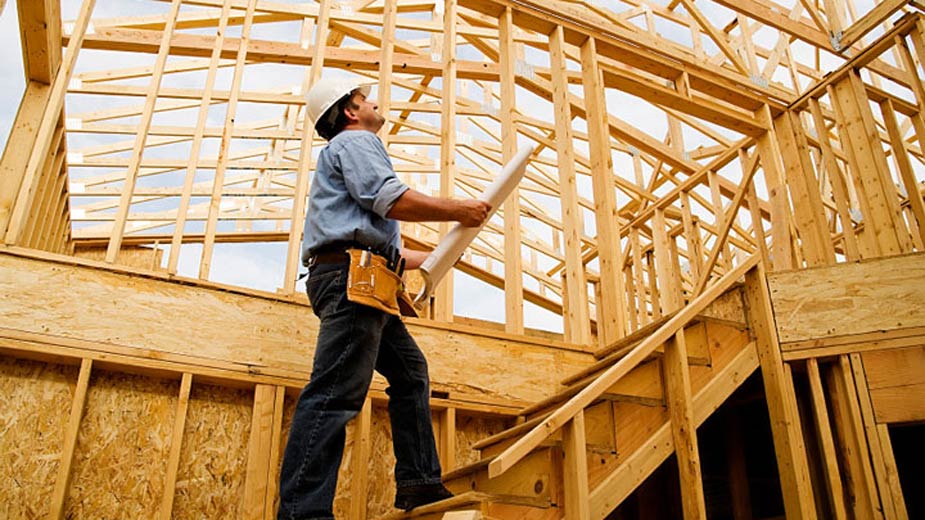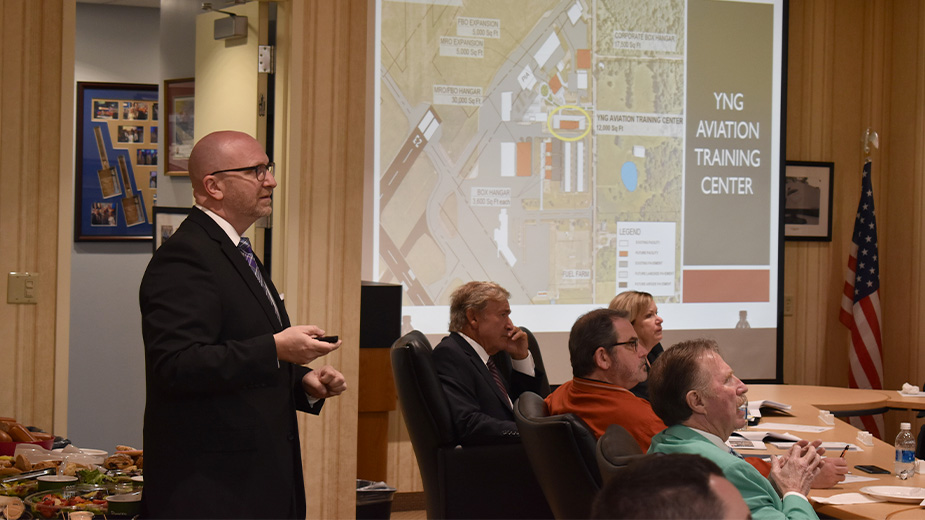Residential Construction Must Deal with Labor Shortage
POLAND, Ohio – Long-term prospects for the housing industry are strong but contractors face short-term supply challenges, including a lack of workers to build new houses, an industry economist said.
“The question is whether the industry can build enough homes to meet the rising level of demand,” Rob Dietz, chief economist for the National Association of Home Builders, said Tuesday. Dietz was the featured speaker at the economic forecast breakfast of the Home Builders & Remodelers Association.
Some 40 representatives of the contracting, real estate and banking industries attended the breakfast in the Poland branch of the Public Library of Youngstown & Mahoning County.
Demand is improving as the number of jobs continues to grow and the overall economy grows, Dietz said, although none of the numbers is especially strong.
“Demand is growing and prices are growing. In fact, home prices are growing faster than incomes and existing home inventory is really tight across the nation, so there’s a demand for home construction,” he said.
“It’s just really a question of whether the industry can rebuild its infrastructure after the losses we saw during the Great Recession, including things like lost workers and a land development sector that’s not large enough to meet the demand for home building going forward,” he continued.
During the recession, workers left the industry and did not return, he said. Also, younger people are not being encouraged to enter the industry.
“We send people to school and they often graduate with degrees that don’t give them any benefit in the job market,” he said.
According to NAHB projections, Single-family housing starts nationally should grow 9% this year and 12% in 2018, which would put starts at only 75% of what is needed, Dietz said. Demand could support 20% industry growth.
“If you think you need 900,000 starts just to keep up with population growth, maybe another 300,000 to 400,000 for replacement stock” – to address housing stock lost to fires or simply retired – “we need to get to 1.3 million, and at the end of 2018 we’re still below one million,” he said.
The model projects conditions that should mirror the national market, with 10% growth in starts this year and “a little bit faster” in 2018.
“We do have a problem with lots and we do have a problem with workforce development,” affirmed Jennie Brewer, HBA executive officer. “That is something that we see not only here in the Valley but across the nation.” The need for workers is something that the national association is working “very diligently” to address.
Richie Abel, who works for his family’s business, Banner Supply Company Inc., Youngstown, said young people – he is 20 years old – aren’t encouraged to enter the construction trades in school.
“For home building, that’s definitely an enormous challenge,” he said. “You can’t build a home if you don’t have the labor to do so.”
Among the measures the industry could take to address the need for workers are creative uses of capital – such as constructing components offsite – and encouraging more women, who make up only 3% of the construction workforce – to enter the building trades.
The residential construction industry could benefit from some of the policies President Donald Trump has proposed, such as reductions in regulations, Dietz said. Regulatory costs have risen about 29% over the past five years and account for about a quarter of the price of a new house, he said. Conversely, construction could be challenged by a reduction in the number of immigrants who work in the industry.
“But so far the industry is actually quite positive,” the economist remarked. “The NAHB monthly builder confidence measure reached a level of 71 this week. That’s the highest rate it’s had in 12 years. So the industry’s confident that we’ll continue to grow and provide supply to the housing market.”
Both Roger Crowell, owner of Crowell Construction, Columbiana, and John Sudon, owner of Sudon Brothers Inc., Liberty Township, say the market has improved since Election Day last November.
“There’s a definite optimism. We’re seeing increases in new construction and remodeling both,” Sudon said.
The two builders also agreed that finding qualified workers is a challenge.
“We lost 50% of our workforce [during the recession] so that’s had a major impact,” he said.
Sue Filipovich, a broker with Burgan Real Estate, Boardman, said she is encouraged to hear that new housing starts are on the rise.
“We’re seeing homes come on the market and they’re sold within a day or a couple days,” she said, “and they’re sold at close to asking or sometimes even above asking price,” she said. “That low inventory is really affecting the number of sales but it is helping to increase the median sale price, which is good for the economy but we would love to have more inventory.”
Copyright 2024 The Business Journal, Youngstown, Ohio.



